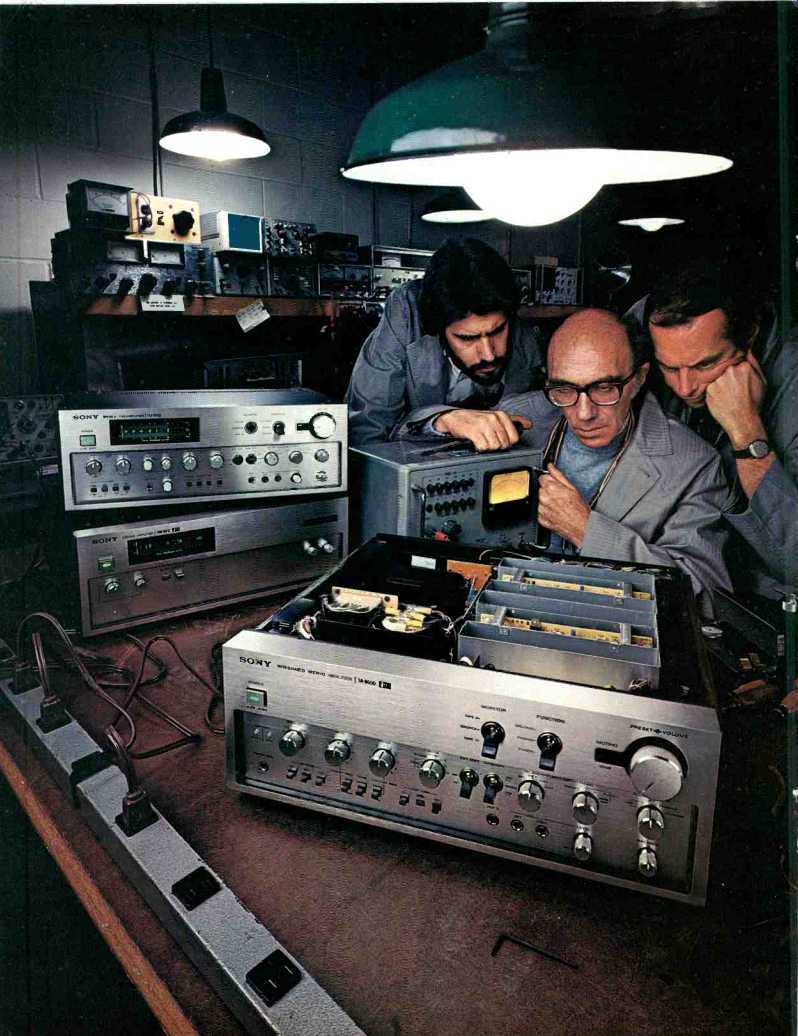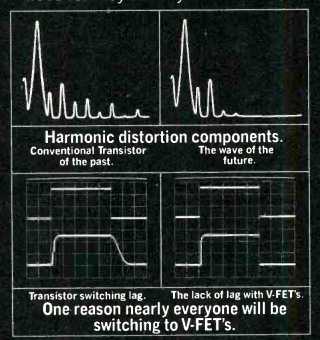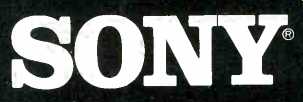Our new series is so advanced, we expect our first customers to be Audio Research & Crown.

They'll haul it back to their labs.
And play it. And play with it. And in general, examine it to pieces to find out How We Did It.
Sony's Vertical Field Effect Transistors: What our competitors are eating their hearts out about.
It's a shame the term "state of the art" has been worn ragged n dozens of "This is It, this is finally and really It" stereo ads. Because anyone in the business will tell you that V-FET's are the biggest thing since the invention of the vacuum tube. V-FET's combine all of the advantages of both triode vacuum tubes and conventional transistors. With none of Their disadvantages.
But nobody else can take advantage of these advantages yet. Ask anybody else how their V-FET's are coming. The responses will range from a forthright and candid "we're working on it," to an equally forthright and candid "buzz off:" Sony is the first company in the world making commercially available equipment with V-FET's. A power-amp, and integrated amp.
Herewith a partial and oversimplified explanation of just what in the world we're talking about.
Triode vacuum tubes: Pros and cons.
To belabor the obvious for a moment, in amplifiers, the name of the game is distortion. And until now triode vacuum tubes have yielded` the lowest levels around. That's because of their non-saturating voltage versus current characteristics. Also, they do not suffer from carrier storage effect (which is standard equipment with regular transistors, and causes notch distortion and deterioration in transient response). So much for the good points of tubes. They also tend to be inefficient, begin to deteriorate as soon as you use them, and wear out. Their high impedance characteristics generally require an output transformer to drive the speakers. And there's no way you can set up a true complementary circuit with vacuum tubes, so there's no way you can get true wave form symmetry.

----Harmonic distortion components.
Conventional Transistor The wave of the of the past. future.
Transistor switching lag. The lack of lag with V-FET's.
----One reason nearly everyone will be switching to V-FET's.
Conventional Bi-polar transistors: Pros and cons.
The advantages of bi-polar transistors can be dealt within a sentence. They're very reliable, very efficient and last almost forever.
But there are a number of bugs in the ointment.
Bi-polar transistors can become saturated with current. And they all cause switching lag distortion. To obtain acceptably low levels of distortion, plus wide frequency response, you need to pump in a lot of negative feedback. Which can make the amp unstable.
Plus (at no extra charge), as they heat up, bi-polar transistors have a marked tendency toward thermal runaway (which is a fancy way of saying they try to self-destruct).
V-FET's: All pros. And that's no con.
First off, V-FET's are very reliable, very efficient and last almost forever. They also match the highly defined tonal duality previously provided only by vacuum tubes. V-FET's don't become saturated with current.
But at the same time, they protect themselves as temperatures build up. So there's no possibility of thermal runaway. Their low impedance characteristics mean no output transformer (the less gizmos in the circuit, the better the sound). The use of V-FET's allows for better control of negative feedback, making the amp more stable. V-FET's don't have carrier storage effect to cause switching lag. And you can use V-FET's to build a true complementary circuit, thus obtaining true wave form symmetry. And isn't that what it's really all about?
One more thing. We'd be less than forthright and candid if we didn't admit that our new amplifiers are a bit pricey. As much as $1300 a piece.
At Sony, we've always maintained that, in the end, the best way to buy equipment is to hear it for yourself. So we're making what's probably the best offer you've ever heard. Have your dealer hook up our new V FET equipment against anything made by anybody. If we sound sure of ourselves, we are.
And we're sure your own ears will tell you we've got the best sound you've ever heard.

SONY. 1975 Sony Corp. of America.
Sony, 9 W. 57 St., N.Y., N.Y.10019.
SONY is a trademark of Sony Corp.
(Source: Audio magazine, Mar. 1975)
Also see: Sony V-FET (July 1977)
= = = =